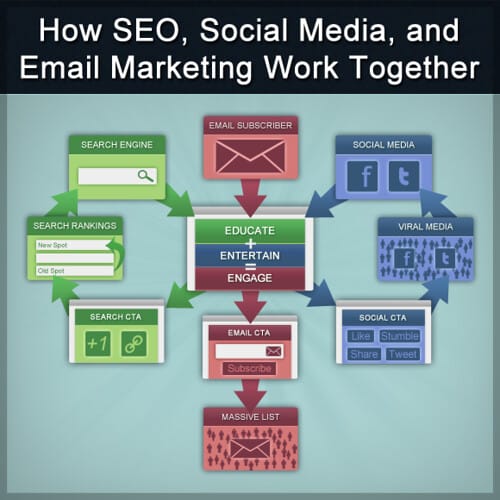In today's fast-paced digital world, content development is a game-changer for small businesses.
Creating engaging, high-quality content can help you stand out in a crowded marketplace and connect with your target audience.
This blog post will explore the importance of content development, share practical tips, and provide actionable insights for small business owners looking to enhance their marketing strategy.

Understanding the Content Development Landscape
To effectively harness the power of content development, it’s essential to first understand the landscape.
Content development encompasses a wide range of activities, including content creation, editing, publishing, and distribution.
It involves crafting various types of content such as blog posts, social media updates, videos, podcasts, and infographics, all tailored to engage your specific audience.
Looking for an experienced Wordpress Development company?
By grasping the nuances of this multifaceted process, small business owners can better strategize their efforts, ensuring their content not only reaches but resonates with their target market.
What is Content Development?
Content development is the process of researching, creating, and publishing information to meet specific business goals. This can include blog posts, social media updates, videos, and more.
The goal is to create content that resonates with your audience, drives engagement, and ultimately supports your business objectives.
The Role of Content Marketing in Today’s Digital Marketplace
In the digital age, content is king. High-quality content can help you rank higher on search engines, attract organic traffic, and build trust with your audience.
Whether you're sharing expert advice through blog posts or engaging with followers on social media, content is a crucial part of your marketing strategy.

Creating an Effective Content Development Process
Understanding the content development process is crucial for producing effective and engaging material.
This section provides a step-by-step overview of the key stages involved, from brainstorming ideas to analyzing performance metrics.
By mastering each step, small business owners can create a cohesive content strategy that aligns with their marketing goals and delivers measurable results.
The process involves careful planning, consistent execution, and ongoing refinement to ensure that the content remains relevant and impactful.
Let's dive into the components that make up a successful content development strategy.

Step 1: Define Your Goals
Begin by defining what you want to achieve with your content.
Are you looking to drive traffic to your website, increase brand awareness, or generate leads? Clear goals will guide your content development efforts and measure success.
Also, consider content ideas and the meaning of the search intent before performing the next step.

Step 2: Conduct Audience Research
Understanding your audience is key to creating website content that resonates. Research your target audience’s preferences, pain points, and behaviors.
Tools like Google Analytics and social media insights can provide valuable data.
If you have existing content, consider how your existing content development process is working or failing.
When considering content production you want to make sure you and your audience are on the same page.

Step 3: Perform Keyword Research
Related keywords are essential for SEO and any content marketing strategy.
Use tools like Google Trends and keyword research tools to identify high-volume keywords relevant to your business and user search intent.
This will help you create content that ranks well on search engines.

Step 4: Create High-Quality Content | The Content Creation Process
Once you've defined your goals, understood your audience, and identified the right keywords, it's time to create high-quality content, with your subject matter expertise.
High-quality content is informative, engaging, and tailored to meet the needs of your audience.
It should be well-researched, accurately sourced, and polished to perfection.
Investing the time and effort into crafting exceptional content can set your business apart, positioning you as a thought leader in your industry and driving sustained engagement.

Step 5: Optimize for SEO
Optimizing your content for search engines is crucial for driving organic traffic to your website. This involves incorporating relevant keywords, meta descriptions, and alt tags in your content.
By optimizing for SEO, you can increase your chances of ranking high on search engine results pages and attracting more visitors.

Step 6: Publish and Promote Your Content
Once you've created high-quality, SEO-optimized content, it's time to publish and promote it across various channels.
Consider using a content calendar to better your current content development process.
Share your content on social media platforms, email newsletters, and industry-specific websites to expand its reach.
Don't be afraid to repurpose content in different formats to reach a wider audience.

Step 7: Monitor and Analyze Performance
The final step of the content development process is monitoring and analyzing its performance.
Use web analytics tools like Google Analytics or social media insights to track engagement metrics such as pageviews, shares, and comments.
This will help you understand what content resonates with your audience and refine your future efforts accordingly.

Enhancing SEO through Content Development
Effective content development plays a crucial role in enhancing Search Engine Optimization (SEO).
High-quality content not only engages your audience but also signals to search engines that your site is valuable and relevant.
Importance of SEO
SEO, or search engine optimization, is crucial for ensuring your content is discoverable by search engines.
High-ranking content drives organic traffic and increases your business's visibility online.
Best Practices for SEO
Integrate keywords naturally into your content, including titles, meta descriptions, and headers.
Focus on creating high-quality, informative content that provides value to your audience.
Avoid keyword stuffing, which can harm your SEO efforts.
Create Relevant, High-Quality Content
Producing content that is informative, engaging, and timely is paramount. Search engines prioritize pages that address user queries effectively.
Continuously updating your content to reflect new information and trends can help maintain relevancy and improve your rankings.
Use Keywords Strategically
Incorporate relevant keywords naturally throughout your content. Avoid keyword stuffing, as this can harm your SEO efforts.
Instead, focus on understanding the intent behind the search terms and create content that genuinely answers those queries.
Keywords should be included in titles, headings, meta descriptions, and within the body content to signal their importance to search engines.
Optimize On-Page Elements
On-page SEO elements such as meta titles, meta descriptions, header tags, and image alt texts should be optimized.
These elements provide context to search engines about the content of your page, aiding in proper indexing and higher rankings.
Improve Content Structure
A well-organized content structure improves readability and SEO. Use clear headings and subheadings to break up your content into easily digestible sections.
Bullet points, numbered lists, and concise paragraphs also enhance user experience and make your content more accessible.
Internal and External Linking
Incorporate internal links to guide users to other valuable content on your site, which can help reduce bounce rates and increase the time spent on your site.
External links to credible sources can enhance the authority of your content. Both internal and external linking are essential components of an effective SEO strategy.
Focus on Mobile Optimization
With the increasing number of mobile users, ensuring your content is mobile-friendly is crucial.
Google uses mobile-first indexing, meaning it predominantly uses the mobile version of the content for indexing and ranking.
Responsive design and fast loading speeds are vital for improving mobile SEO.
Monitor Performance and Refine Strategies
Regularly analyze the performance of your content using tools like Google Analytics.
Track metrics such as organic traffic, bounce rates, and conversion rates. Use this data to refine your content development strategies, ensuring continuous improvement and sustained SEO success.
By integrating these SEO strategies into your content development process, you can enhance your website’s visibility, drive more organic traffic, and ultimately achieve your business goals.
Engaging Your Audience
Engaging your audience is vital for building a loyal and active community around your brand.
When your audience feels connected and valued, they are more likely to interact with your content, share it with others, and become advocates for your business.
Effective engagement goes beyond simply broadcasting your message; it involves listening, responding, and fostering a two-way conversation.
In this section, we will explore strategies for understanding your audience, creating interactive content, and leveraging various channels to foster meaningful connections.
By implementing these techniques, you can cultivate a vibrant and engaged audience that supports your long-term growth and success.
Strategies for Engagement
To keep your audience engaged, produce content that is relevant, timely, and valuable.
Use storytelling techniques to make your content more relatable and compelling.
Utilizing Social Media
Social media platforms are powerful tools for content distribution. Share your content on platforms where your audience is most active.
Engage with your followers by responding to comments and messages.
Other Distribution Channels
In addition to social media, consider using email marketing, guest blogging, and partnerships with influencers to distribute your content.
Diversifying your distribution channels can increase your reach and engagement.

Measuring Success and Making Improvements
Measuring the success of your content and making necessary improvements is crucial for ensuring continuous growth and achieving your marketing objectives.
By systematically tracking performance metrics, you can identify what strategies are working and where adjustments are needed.
This data-driven approach helps you refine your content development and distribution efforts, ultimately leading to better engagement and higher conversion rates.
In this section, we will delve into the key performance indicators (KPIs) you should monitor and outline actionable steps for analyzing data and making improvements to your content strategy.
By focusing on continuous optimization, you can enhance the effectiveness of your content and drive greater business success.
Key Metrics to Consider
To evaluate the effectiveness of your content strategy, track metrics such as website traffic, social media engagement, and conversion rates.
These metrics provide insights into how your content is performing.
Adjusting Based on Data
Use data to identify what’s working and what’s not. Make adjustments to your content strategy based on feedback and performance metrics.
Continuous improvement is key to a successful content development process.
Seeking Professional Help
If you’re struggling to develop a content strategy that works, consider reaching out to experts.
Priceless Consulting offers professional marketing services to help you achieve your business goals.

Conclusion
Content development is essential for small businesses looking to thrive in today’s digital marketplace.
By understanding your audience, creating high-quality content, and leveraging SEO best practices, you can engage your target audience and drive business growth.
Don’t hesitate to seek professional help if needed. Reach out to us at Priceless Consulting for assistance with your marketing strategy.







